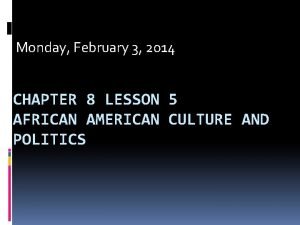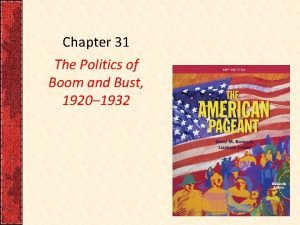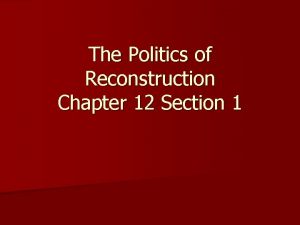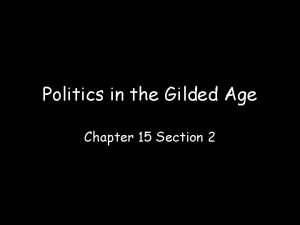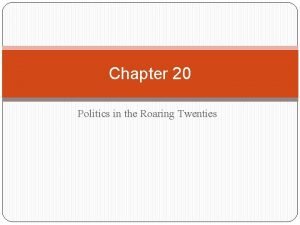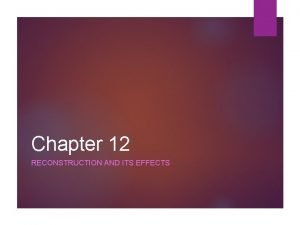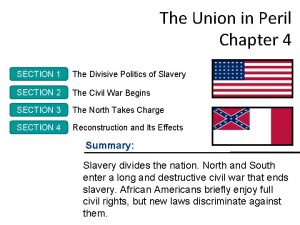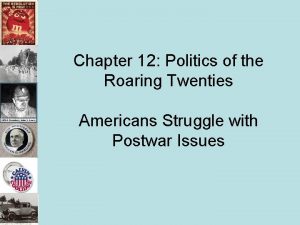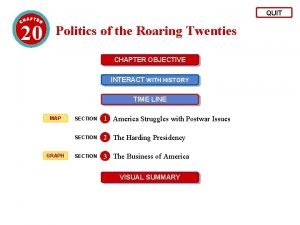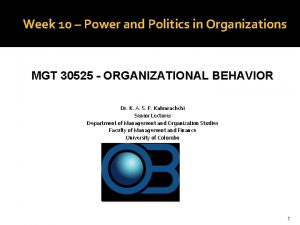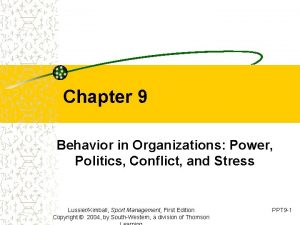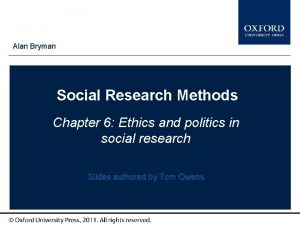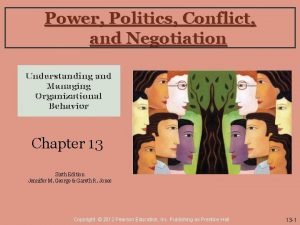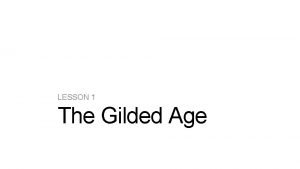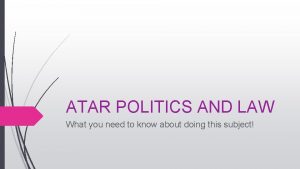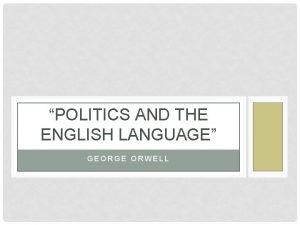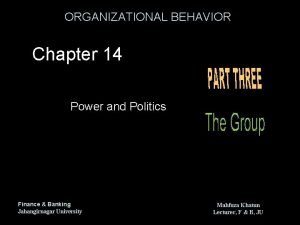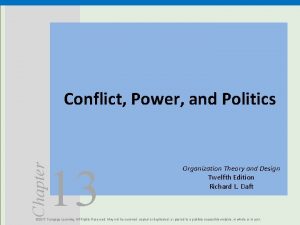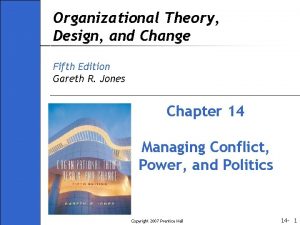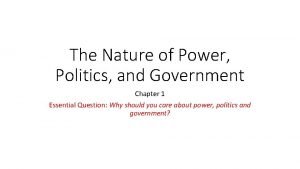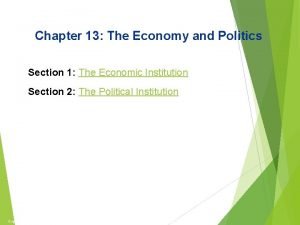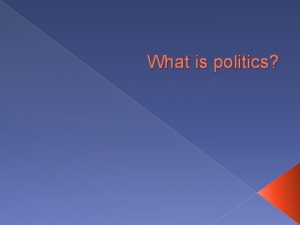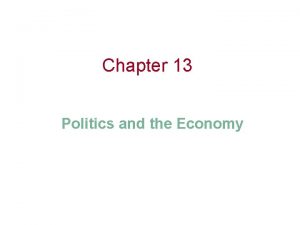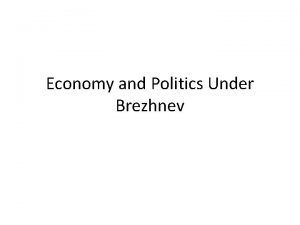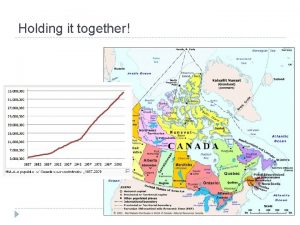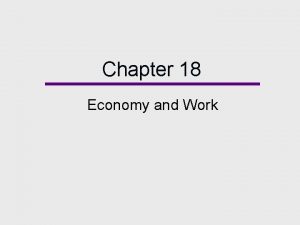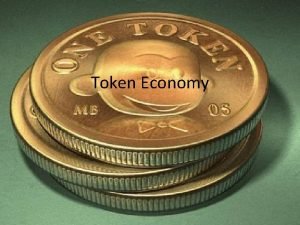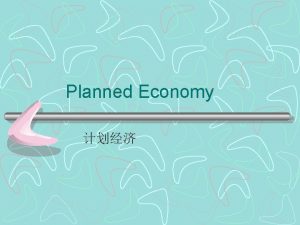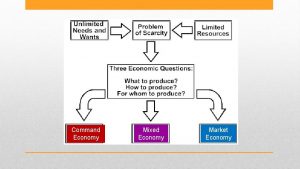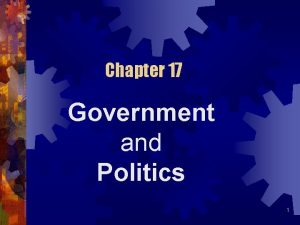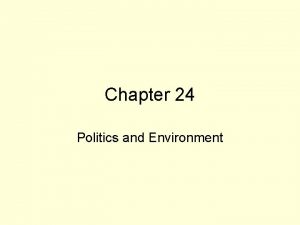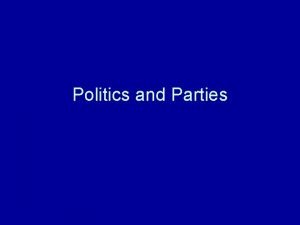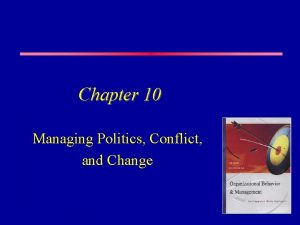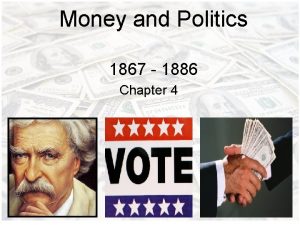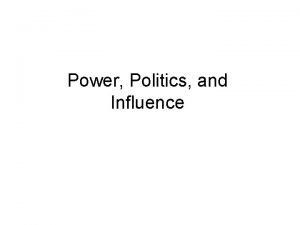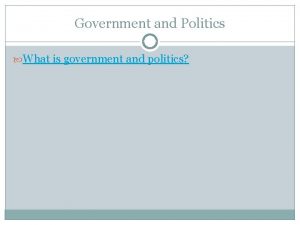Chapter 14 Politics and the Economy Chapter Outline






























- Slides: 30

Chapter 14 Politics and the Economy

Chapter Outline § § § § Political and Economic Institutions Power and Political Institutions Power and the State Individual Participation in U. S. Government Modern Economic Systems The U. S. Economic System Work in the United States

Two Kinds of Power Coercion is power based on fear by using force and intimidation. 2. Authority is power based on socially accepted norms that maintain the right of some authority to wield power. 1.

Three Types of Authority Traditional authority is rooted in established roles, like father, elder, or king. 2. Charismatic authority arises from the exceptional personality that may sway and inspire others. 3. Rational-legal authority is based on formal regulations and laws. 1.

Power Concept Example “mowing the lawn” Power Coercion “I know you don’t want to mow the lawn, but do it anyway. ” “Do it or else. ” Authority “It is your duty to mow the lawn. ”

Power Concept Example “mowing the lawn” Traditional Authority Charismatic authority Rational-legal authority “I’m your father, and I told you to mow the lawn. ” “I know you’ve been wondering how you might serve me, . . . “It is your turn to mow the lawn; I did it last week. ”

Perceptions of Government Responsibilities: % Who Agree with the Statement:

Comparison of Three Models of American Political Power Basic units of analysis Pluralist Interest Groups Power-Elite Power elites State Autonomy Government bureaucracy

Comparison of Three Models of American Political Power Source of power Pluralist Power-Elite State Autonomy Situational; depends on issue Inherited and positional; top positions in key economic and social institutions Control of personnel and budget of government

Comparison of Three Models of American Political Power Distribution of power Pluralist Power-Elite State Autonomy Dispersed among competing diverse groups Concentrated in relatively homogeneous elite Held by bureaucrats

Comparison of Three Models of American Political Power Limits of power Pluralist Power-Elite State Autonomy Limited by shifting and crosscutting loyalties Potentially limited when other groups can unite in opposition Limited if elite is unified

Comparison of Three Models of American Political Power Role of the State Pluralist Power-Elite State Autonomy Arena where interest groups compete One of several sources of power A major source of power

Characteristics of The State Jurisdiction - includes policing, armed forces, taxation, conflict resolution, relationships with other states, and resources for collective goals. § Coercion - monopolizing the use of physical force through police powers, taxation, and the maintenance of armed forces. §

Participation in the 2000 Election Education 8 years or less Some high school High school graduate Some college College graduate or more % Registered 36 46 % Who Voted 27 34 60 49 70 60 77 72

Participation in the 2000 Election Race/Ethnicity White African American Hispanic % Registered 66 64 35 % Who Voted 56 54 28

Participation in the 2000 Election Age 18– 20 21– 24 25– 34 35– 44 45– 64 65 % Registered 41 49 55 64 71 769 % Who Voted 28 35 44 55 64 68

% Voting Democrat or Republican in 1996 Presidential Election Race/Ethnicity Democrat Republican White African American 54 99 46 1

% Voting Democrat or Republican in 1996 Presidential Election Education Grade school High school College Democrat 82 60 49 Republican 18 40 51

% Voting Democrat or Republican in 1996 Presidential Election Age Democrat Republican 18– 37 38– 53 54– 69 70 -85 86 and over 58 58 56 64 57 42 42 44 36 43

Social Factors and Political Participation Social class - those who benefit most are most inclined to get involved in politics. 2. Age - 50% of U. S. voters are over 45 y. o. 3. Race and ethnicity - African. Americans are more inclined to political participation than in the past. 1.

Social Factors and Political Participation Differentials in office holding about 1% of federal legislators are African-Americans and only 8 are women. 5. Party affiliation - Republicans have traditionally represented business while Democrats have been more supportive of the interests of workers and the disadvantaged. 4.

Why Doesn’t the United States Have a Worker’s Party? U. S. standard of living is sufficiently luxurious to lull many people into complacency. § American dream continues to influence people to think of individualistic over common goals. §

Capitalism Private ownership of the means of production - land, capital, and the labor of workers. § Encourages hard work and innovation toward maximizing competitive advantage. § Does not attend to distribution and does not provide for the public good. §

Socialism The means of production is owned by the workers and distribution is for the public good. § Creed of pure socialism: from each according to ability, to each according to need. § The key drawback of socialism is the absence of personal economic incentive. §

Changing Labor Force in the United States

Professions § § § Production of an unstandardized product. High degree of personal involvement. Wide knowledge of a specialized skill. Sense of obligation to one's art. Sense of group identity. Significant service to society.

The Shifting Job Market: Projected Changes Between 2000 and 2010

The Downside of Technology Deskilling of some jobs. § Displacements of the work force as some jobs vanish and new ones appear. § Big brother jitters and stress as computerized jobs also provide the means of constant worker monitoring by supervisors. §

Using Public Policy to Protect U. S. Jobs The conservative free market approach - proposes that the way to keep jobs in the U. S. is to reduce wages and benefits. § New industrial policies - government should restrict plant closings and support investments in local economies to provide more secure jobs. §

Using Public Policy to Protect U. S. Jobs § Social welfare policies - helping people who are being thrown out of work through more generous unemployment benefits, paid leave for employees who are about to be laid off, and extensive job re-training programs.
 Athens and sparta were both
Athens and sparta were both Quotation sandwich example
Quotation sandwich example Chapter 8 lesson 5 african american culture and politics
Chapter 8 lesson 5 african american culture and politics Chapter 31 the politics of boom and bust
Chapter 31 the politics of boom and bust The politics of reconstruction chapter 12 section 1
The politics of reconstruction chapter 12 section 1 Pendleton civil service act
Pendleton civil service act Chapter 20 section 2 the harding presidency
Chapter 20 section 2 the harding presidency Reconstruction and its effects chapter 4 section 4
Reconstruction and its effects chapter 4 section 4 Chapter 4 section 1 the divisive politics of slavery
Chapter 4 section 1 the divisive politics of slavery Chapter 15 section 3 politics in the gilded age
Chapter 15 section 3 politics in the gilded age Chapter 12 politics of the roaring twenties
Chapter 12 politics of the roaring twenties Politics of the roaring twenties
Politics of the roaring twenties Chapter 20 politics of the roaring twenties
Chapter 20 politics of the roaring twenties Power and politics in organizations
Power and politics in organizations Media and information economic opportunities
Media and information economic opportunities Bureaucracy and politics in india
Bureaucracy and politics in india Power, politics and conflict in organizations
Power, politics and conflict in organizations Ethics and politics in social research bryman
Ethics and politics in social research bryman Conflict power and politics
Conflict power and politics Philosophy, politics and economics michael munger
Philosophy, politics and economics michael munger Lesson 1 politics and the gilded age
Lesson 1 politics and the gilded age Chapter 20 whose government
Chapter 20 whose government Polis bsc
Polis bsc Government unit 1 study guide
Government unit 1 study guide Politics and law atar
Politics and law atar Relationship between sports and politics
Relationship between sports and politics Politics and the english language
Politics and the english language Power and politics organizational behavior
Power and politics organizational behavior Power and politics organization theory
Power and politics organization theory Power and politics
Power and politics The nature of power politics and government
The nature of power politics and government


